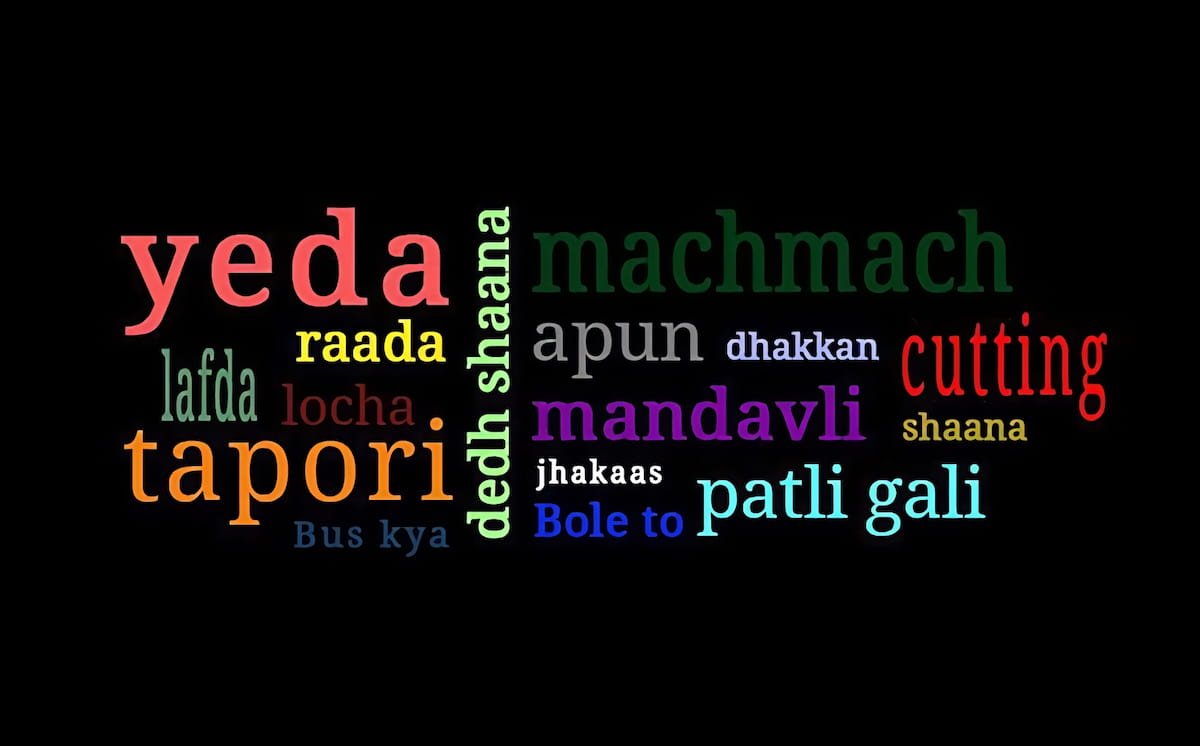
India is a country with multiple languages, but there is a misconception that Hindi is our national language and we all should speak it well. Especially Hindi-speaking people have a lot of communication problems with the non-Hindi population because of the way they address or talk. For example, if a North Indian has to ask, “How are you?” they will say, “Aap kaise ho ji.” We Mumbaikars are very loving people. We know only two types of people: Khas and Khasam Khas (important public), which are those who are professional acquaintances or known for some reason but not very relevant. Khasam Khas are those who have a special place in your heart.
If we have our typical lingo, we will say, “Tu kaisa hai re?” “Sab thik hai na?” (How are you? Is everything alright?) North India will feel disrespected or offended because they don’t have the habit of using words like “Tu” or “Tereko.” Aap hum (you and we) is the only way they speak.
I had a friend from north India, and being very close to each other, I used to speak to him in my lingo, but after some time he started getting irritated with my Hindi because for him it was disrespectful and annoying, and for me it was my way of speaking. South Indians residing in Mumbai, especially, have very funny Hindi. There are striking differences between the north and south. North Indians mostly expect us to speak a very literary form of Hindi, but on the other hand, why do people from the north who stay in south Indian cities like Chennai, Bengaluru, and Hyderabad, etc., never try to pick up the local language and try to converse in it? They don’t even try to converse in English, even though they know the language is well understood in the South.
Hindi is the common language of Mumbai, and it is spoken in a slang that is unique to the city. Mumbai is famous for its “Bambaiya language,” which we call Tapori, which is not so polite if you understand Hindi. Mumbai Local people know it well and many times use it commonly at public places, markets, etc. Many of them ignore it, and many in the city simply enjoy that rough talk. For example, Ghanta means impossible, and North Indians will say Asambhav.
Chutiya mat bana means “don’t fool me,” but north India will take it as abuse whereas Mumbaikar will talk it out casually.
Waat lag gayi (I am screwed). Kya thakela maal chipka diya (you gave bad-quality stuff). Chal ae zandu: Move away, you idiot. Khajoor: In Arabic, “Khajoor” means the fruit “dates.” Here, it again means referring to a person as stupid with no sense. Chamdi: womanizer; “Fattu refers to a scared person. Faadu: superb. Chindi: stingy. Saltale : Solve it Here Only. Chipka Dal: Give it back. Locha Hogaya or Lafda Hogaya: Messed up or there is some problem. Chava Lagraha hai: You look handsome. Du kya karcha pani: Shall I bash or punch you? in an arrogant tone. Banana is Kela, Single is Akela, Tired is Thakela, Bored is Pakela, Stuck-up is Atkela, Angry is Satkela, Hung-up is Latkela, and Lost is Bhatkela. And dead is tapkela.
Mumbai Hindi knows no grammar or etiquette. If you learn Hindi from anywhere else, it will be a North Indian version of grammatically correct Hindi, which is fine, but you’ll sound like an English duke in Harlem. Mumbai doesn’t speak Hindi natively; as such, Hindi is a non-local language and is a recent immigrant, along with migrants from the north and the filmdom. Bombay, being an important administrative and commercial city, attracted people from all over India. After the partition of India, it got its share of Sindhis and Punjabis, who had to settle down in big cities rather than in small towns.
This was in addition to the Northerners already staying there. The native tongues spoken earlier were the Prakrit tongues of Konkani, Marathi, Gujarati, and Dakhani (South Indian Urdu). Gujarat and Maharashtra belonged to the British Bombay presidency, so Bombay was the capital city for the vast region encompassing Northern Karnataka, Maharashtra (excluding vast sections of Vidarbha, as Nizam controlled! ), and Gujarat. Hindi didn’t have a presence there until extensive immigration during the late 1800s and onwards. So, the Hindi that developed in the 1900s was heavily influenced by these local languages.
The Hindi spoken on Mumbai’s streets is heavily influenced by regional languages and has a distinct Southern flavor. This is a gender-neutral, slightly masculine, earthy language laced with Bombaiya idioms, slang, and Gujju-Marathi words.
Many north Indians tend to mock, ridicule, and laugh at south Indians who speak Hindi. In spite of being bullied over the languages of South India or Marathi, people never shy away from speaking their typical broken or slang Hindi. All they know is that language is an expression that connects them with others. As long as it’s a private conversation or expressing love, they will speak the way they feel belongs to them and is comfortable. Those who are offended by their Mumbaiya Hindi are unlucky because the formality of speaking correct Hindi may cause them to fake or lose the love that they naturally express.

